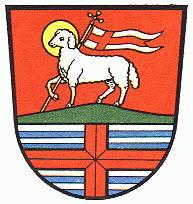Prüm (kreis): Difference between revisions
Jump to navigation
Jump to search
Knorrepoes (talk | contribs) m (Text replace - "'''Origin/meaning :'''<br/>" to "====Origin/meaning====") |
Knorrepoes (talk | contribs) m (Text replace - "|width="15%"|50 px|right |} " to "|width="15%"|50 px|right |}<seo title="Wappen, Gemeindewappen" /> ") |
||
| Line 3: | Line 3: | ||
|width="70%" align="center" |'''Heraldry of the World<br/>Civic heraldry of [[Germany]] - [[Deutsche Wappen|Deutsche Wappen (Gemeindewappen/Kreiswappen)]]''' | |width="70%" align="center" |'''Heraldry of the World<br/>Civic heraldry of [[Germany]] - [[Deutsche Wappen|Deutsche Wappen (Gemeindewappen/Kreiswappen)]]''' | ||
|width="15%"|[[File:Germany.jpg|50 px|right]] | |width="15%"|[[File:Germany.jpg|50 px|right]] | ||
|} | |}<seo title="Wappen, Gemeindewappen" /> | ||
'''PRÜM (PRÜ)''' | '''PRÜM (PRÜ)''' | ||
Revision as of 19:21, 5 November 2012
| Heraldry of the World Civic heraldry of Germany - Deutsche Wappen (Gemeindewappen/Kreiswappen) |
PRÜM (PRÜ)
State : Rheinland-Pfalz
Incorporated into : 1970 Bitburg-Prüm
Origin/meaning
The arms were granted on September 6, 1955.
The Agnus Dei represents the power of the local abbey, whose Prince-Abbots ruled over a large part of the district. It's power was abolished in 1803. The Agnus Dei is also the arms of the city of Prüm.
The cross in the lower part represents the State of Trier, as the abbey became a possession of the bishops of Trier in 1576. The blue and white bars in the lower part are taken from the arms of Luxembourg, as the Western part of the district was ruled in condominium between Trier and Luxembourg.
Literature : Stadler, K. : Deutsche Wappen - Bundesrepublik Deutschland. Angelsachsen Verlag, 1964-1971, 8 volumes.

